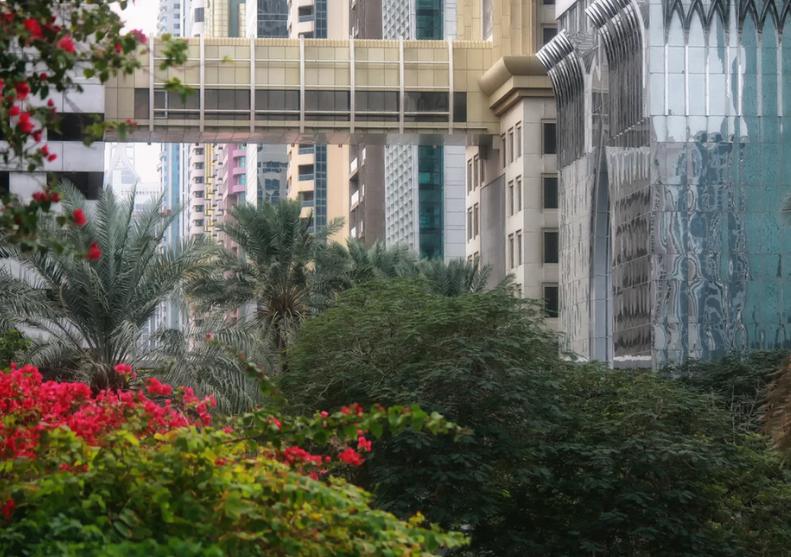
The ancient buildings speak of the civilization that believed in spiritual connection with nature. Those buildings depicted the harmony among the people and the environment. Our ancestors often limited the wastage of resources. Over the last centuries, the structures and architectures have risen to the sky and have become a symbol of modernization and progress, somewhere along the way they also have become detrimental to the earth climatic condition.
A recent survey demonstrated that the iconic talents of Homo sapiens to construct flawless architectures are the direct contributors to global energy deficiency. Nearly 40% of the energy-related global emissions are attributed to buildings, and 60% of wastes come from the premises and related activities. To limit the human-induced energy deficiency in the world, it is very necessary for us to implement the sustainable construction of houses, hospitals, schools, colleges, workplace and other buildings. Transforming these building into a green building can cut down the energy usage by 50% and can directly contribute to the control of greenhouse effects. Globe is functioning to reconcile the deep gap between the demand and supply of renewable and non-renewable resources through cost-effective interventions. Sustainable buildings utilize comparatively less energy and water, induce fewer greenhouse gases, wield materials more efficiently and generate less waste than conventional buildings.
Globe craves for sustainable buildings
The green buildings or the sustainable buildings are designed in such a way that they balance the environment with ecosystem responsibilities, exhibit resource efficiency and uphold the community sensitivity. These buildings minimize overall environmental impacts and enhance user comfort and productivity. The green building uses less amount of water to generate fewer wastes and also optimize energy consumption. These buildings restore the mental health of human beings, enrich clean air, water and soil in the surrounding and initiate holistic accomplishment of conservation.
Merits of energy efficiency
Energy efficiency is the process of utilizing less amount of energy to provide an equal amount of services. For example, if you are using a traditional incandescent bulb which is less efficient than a compact fluorescent bulb then, it uses more electricity to produce the same amount of illumination. Similarly, an efficient water heater requires less energy to heat the water compared to the traditional model of the water heater. The developed countries are moving away from the conventional way of consuming energy. They are implementing more efficient equipment to store the quality of the environment and spread the wellbeing and initiate co-existence of humans with plants and animals.
Usage of more energy-consuming types of machinery exhibit less capacity and a higher level of maintenance for smooth operations, this, in turn, makes the surrounding more vulnerable to the uncertainty and impose substantial health risks. But an improved set up can offer better performance and more excellent output rates with less energy intake. This enriches the operation and the calibre of the unit.
What are the benefits of sustainably designed buildings?
Environmental benefits
The structures built on the model of sustainable housing place minimal knock on the environment. The usage of environment-friendly material possesses significant health benefits on humans as well as the living world. This is accomplished through the prudent use of natural and human made resources by deploying efficient methodologies. The system can offer recycling, reuse of renewable energy sources such as used water, solar energy and wind energy.
Financial benefits
The design comes up with considerable cost benefits. The sustainability regulations integrate the holistic wellness of constructions and offer an improved lifestyle with low cost compared to the conventional buildings due to the reduced maintenance and replacement. In addition to this, the prices of the material are highly affordable and reusable. The solar energy, wind energy and water recycling, in a way, contributes to the efficient energy-saving network and facilitates an ecofriendly atmosphere.
Social benefits
Human beings are also called as rational animals and social people; our existence in community living is what makes us humans. Rather than fighting for clean air, water and soil. Implementing measures that can initiate practical living in accordance with the environment can make our lives more stable and productive in this world.
There are 3Rs through which we can eradicate the energy deficiency to a greater extent. They are reuse, recycle and reinvent. Reusing the materials or bi-products and traditional technologies to reduce the costs incurred in constructing the model of the buildings and successfully operate them, and recycling all possible wastes generated by the buildings or sites during the construction and demolition. Giving them a new shape or form and transforming the wastes into new raw material. Reinventing using the engineering techniques, designs and practicing it throughout the globe can benefit in a larger quantity.
